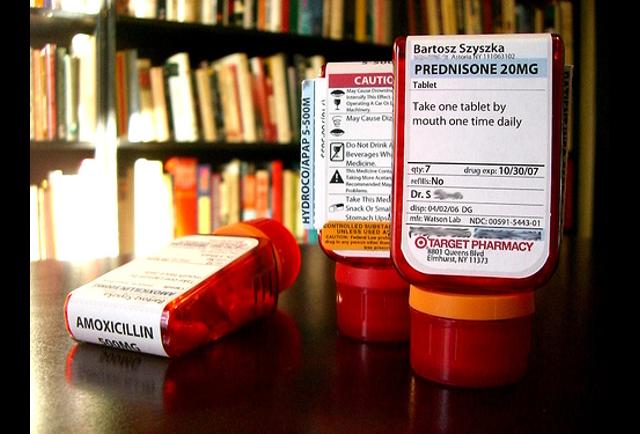Google is purportedly considering installing a "buy button" in its list items, as per a report by the Wall Street Journal, which referred to unknown sources.
The news is frightening to retailers, the Journal said. It composes:
Some retailers said they worry the move will turn Google from a valuable source of traffic into a marketplace where purchases happen on Google’s own websites.
Google is making moves to mitigate retailers concerns. Shoppers will have the capacity to pick into the same showcasing projects that they would have indicated had they made the buy on the retailers' own sites, permitting retailers to get the client's contact data, one of the WSJ's sources said. Moreover, Google is apparently encouraging to vigorously mark the item pages where the buyers will go to make the buy. Likewise, suggestions for further buys might be from that retailer.
As it would turn out, retailers have been managing a large number of new buy button advancements recently. Amazon, for example, as of late took off invitations for purchasers to partake in Dash, a WiFi enabled button that you press to purchase staples and which makes purchasing detergent look like out and out fun.
Facebook has "Shop Now" suggestion. Twitter's buy button is beginning to appear here and there. Pinterest is evidently joining the quarrel. Will Instagram offer its own particular local purchase button? It would be insane not to, given the business on the site as of now.
This is the thing that StyleCaster says in regards to the pattern of offering garments on the site at this time:
One quick search for hashtags that include #Instashop, #ShopMyCloset, and #InstaSale, and you’ll find millions of posts of people looking to unload everything from rareChanel handbags, to vintage maxi dresses, to pre-worn J.Crew.
Here’s how it works: Put in one of the top hashtags—say #ShopMyCloset—and pull up all the posts that use it. Browse through, find something you want to buy, and then comment on the photo telling the seller you want it. He or she will then work with you to finalize the purchase, usually using a payment service like Paypal.
Envision what amount more consistent this procedure would become with an Instagram buy button. If it were these particular developments, retailers could adjust. After all, most brands have made an outstanding showing of transitioning online to meet e-trade rivalry.
Anyway, the buy button is meaningful for a much bigger pattern that doesn't look good for retailers by any means: each new development and plan of action in this space is taking into account isolating the retailer from the client.
This is what the WSJ article on Google's buy button said in regards to the retailers' worries:
The retailers, who wouldn’t voice their concerns publicly, fear such a move will turn them into back-end order takers, weakening their relationships with shoppers.
It's likely that this is the most telling sentence in the entire article.
Presently considering different developments, for example, Instacart, an administration that shops for and afterward delivers staple goods and different merchandise, similar to pet supplies, within a couple of hours to clients. This year it banded together with Whole Foods for Valentine's Day after months and months of Whole Foods holding it under control. Entire Foods in the end inferred that the potential advantages of an organization exceed the potential cannibalization of offers.
Perhaps, however the administration does release the ties with its clients, who will no more really enter the store, or seldom will. Before long, its purchasers will see shopping for food as a, pun intended joke, “apple to apples comparison” as more retailers like Wal-Mart offer natural produce, however at a much lesser cost. Also, why not, the client's relationship is with Instacart now, not Whole Foods. So it will run with the Google buy button, yet on a far more amazing scale. Retailers ought to be perplexed.
References:
http://www.forbes.com/sites/erikamorphy/2015/05/16/why-retailers-should-worry-if-google-joins-the-buy-button-brigade/
http://www.forbes.com/sites/erikamorphy/2015/05/16/why-retailers-should-worry-if-google-joins-the-buy-button-brigade/2/
The news is frightening to retailers, the Journal said. It composes:
Some retailers said they worry the move will turn Google from a valuable source of traffic into a marketplace where purchases happen on Google’s own websites.
Google is making moves to mitigate retailers concerns. Shoppers will have the capacity to pick into the same showcasing projects that they would have indicated had they made the buy on the retailers' own sites, permitting retailers to get the client's contact data, one of the WSJ's sources said. Moreover, Google is apparently encouraging to vigorously mark the item pages where the buyers will go to make the buy. Likewise, suggestions for further buys might be from that retailer.
As it would turn out, retailers have been managing a large number of new buy button advancements recently. Amazon, for example, as of late took off invitations for purchasers to partake in Dash, a WiFi enabled button that you press to purchase staples and which makes purchasing detergent look like out and out fun.
Facebook has "Shop Now" suggestion. Twitter's buy button is beginning to appear here and there. Pinterest is evidently joining the quarrel. Will Instagram offer its own particular local purchase button? It would be insane not to, given the business on the site as of now.
This is the thing that StyleCaster says in regards to the pattern of offering garments on the site at this time:
One quick search for hashtags that include #Instashop, #ShopMyCloset, and #InstaSale, and you’ll find millions of posts of people looking to unload everything from rareChanel handbags, to vintage maxi dresses, to pre-worn J.Crew.
Here’s how it works: Put in one of the top hashtags—say #ShopMyCloset—and pull up all the posts that use it. Browse through, find something you want to buy, and then comment on the photo telling the seller you want it. He or she will then work with you to finalize the purchase, usually using a payment service like Paypal.
Envision what amount more consistent this procedure would become with an Instagram buy button. If it were these particular developments, retailers could adjust. After all, most brands have made an outstanding showing of transitioning online to meet e-trade rivalry.
Anyway, the buy button is meaningful for a much bigger pattern that doesn't look good for retailers by any means: each new development and plan of action in this space is taking into account isolating the retailer from the client.
This is what the WSJ article on Google's buy button said in regards to the retailers' worries:
The retailers, who wouldn’t voice their concerns publicly, fear such a move will turn them into back-end order takers, weakening their relationships with shoppers.
It's likely that this is the most telling sentence in the entire article.
Presently considering different developments, for example, Instacart, an administration that shops for and afterward delivers staple goods and different merchandise, similar to pet supplies, within a couple of hours to clients. This year it banded together with Whole Foods for Valentine's Day after months and months of Whole Foods holding it under control. Entire Foods in the end inferred that the potential advantages of an organization exceed the potential cannibalization of offers.
Perhaps, however the administration does release the ties with its clients, who will no more really enter the store, or seldom will. Before long, its purchasers will see shopping for food as a, pun intended joke, “apple to apples comparison” as more retailers like Wal-Mart offer natural produce, however at a much lesser cost. Also, why not, the client's relationship is with Instacart now, not Whole Foods. So it will run with the Google buy button, yet on a far more amazing scale. Retailers ought to be perplexed.
References:
http://www.forbes.com/sites/erikamorphy/2015/05/16/why-retailers-should-worry-if-google-joins-the-buy-button-brigade/
http://www.forbes.com/sites/erikamorphy/2015/05/16/why-retailers-should-worry-if-google-joins-the-buy-button-brigade/2/






